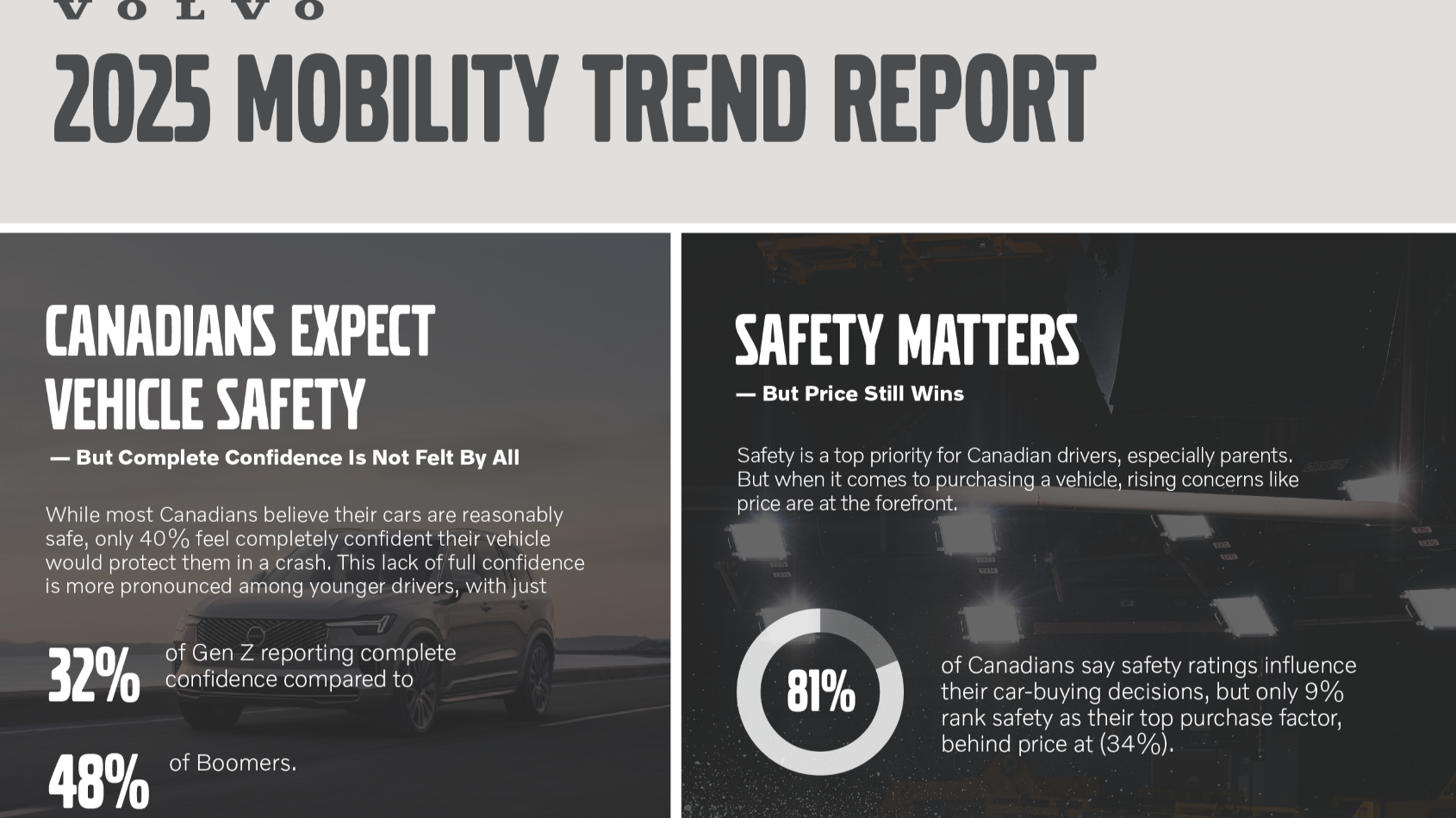Survey says Canadians care about safety, but confidence in safety features lags

Image courtesy of Volvo Car Canada.
By subscribing, you agree to receive communications from Auto Remarketing and our partners in accordance with our Privacy Policy. We may share your information with select partners and sponsors who may contact you about their products and services. You may unsubscribe at any time.
Canadians value vehicle safety.
That much is clear, as the latest research from Volvo Car Canada found 81% of Canadians said safety ratings influence their purchasing decisions.
But that’s not the end of the story.
Volvo’s survey of 1,505 Canadians on the Angus Reid Forum, conducted in May, also showed fewer than half said they fully trust their current vehicle to protect them in a crash, and less than a tenth consider safety their top priority when shopping for a vehicle.
In a news release, Volvo said the findings “reveal a critical gap between what drivers say they value and how they actually feel on the road.”
Case in point: A mere 9% of respondents said safety is the top factor they consider when buying a car. Among younger Canadians, it doesn’t even crack the top four, with price (45%), environmental impact (12%), brand reputation (10%) and fuel efficiency (9%) taking those spots.
Subscribe to Auto Remarketing to stay informed and stay ahead.
By subscribing, you agree to receive communications from Auto Remarketing and our partners in accordance with our Privacy Policy. We may share your information with select partners and sponsors who may contact you about their products and services. You may unsubscribe at any time.
Baby boomers — the most safety-conscious generation surveyed — picked safety fourth, cited by 13%, trailing price (28%), brand reputation (17%) and fuel efficiency (16%).
Other findings include:
- Just 40% of Canadians said they’re completely confident their car would protect them in a collision, with a low of 32% for Generation Z respondents and a high of 48% among boomers.
- While 61% trust automated safety features like blind spot monitoring and lane-keeping assist, an almost equal number (59%) said they find modern safety technology distracting or confusing, led by younger drivers.
- 40% of Canadians consider the backup camera to be an essential feature and 26% said the same about blind spot detection.
- 51% overall said they’re willing to pay more for advanced safety features, but only 44% of younger Canadians agreed, illustrating the priority of price over safety given their budget constraints. The survey found 55% of parents said they pay extra for full safety packages, compared to 45% for drivers without children.
Volvo called safety “a founding principle” of the company citing its introduction of the three-point safety belt in 1959 and its safety knowledge built on 50-plus years of research collected from real-world accidents, which led to the Volvo Cars Safety Standard.
Its latest feature is Safe Space Technology, made up of advanced driver assistance systems designed to help protect people in and around the car and help prevent accidents from happening in the first place.
Volvo said its mission is to close the gap between expectation and experience through innovation based on real-world research, now with AI and machine learning to analyze billions of real-time data points.
“Canadians are telling us safety matters, and we’ve been listening for decades,” Volvo Car Canada managing director Matt Girgis said. “At Volvo, we’re designing cars and safety innovations that help protect what matters most — people and their families.”


